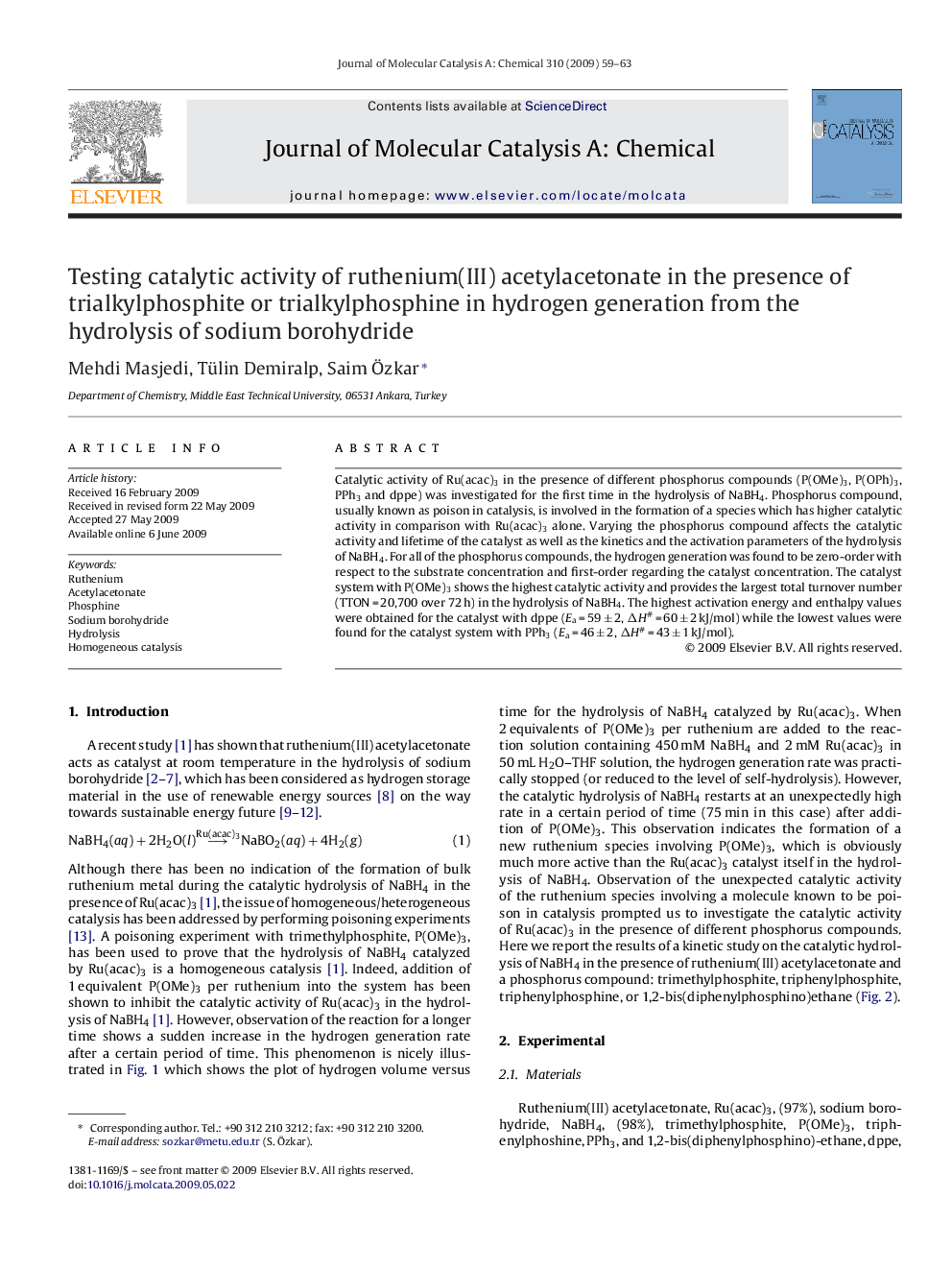| Article ID | Journal | Published Year | Pages | File Type |
|---|---|---|---|---|
| 66914 | Journal of Molecular Catalysis A: Chemical | 2009 | 5 Pages |
Catalytic activity of Ru(acac)3 in the presence of different phosphorus compounds (P(OMe)3, P(OPh)3, PPh3 and dppe) was investigated for the first time in the hydrolysis of NaBH4. Phosphorus compound, usually known as poison in catalysis, is involved in the formation of a species which has higher catalytic activity in comparison with Ru(acac)3 alone. Varying the phosphorus compound affects the catalytic activity and lifetime of the catalyst as well as the kinetics and the activation parameters of the hydrolysis of NaBH4. For all of the phosphorus compounds, the hydrogen generation was found to be zero-order with respect to the substrate concentration and first-order regarding the catalyst concentration. The catalyst system with P(OMe)3 shows the highest catalytic activity and provides the largest total turnover number (TTON = 20,700 over 72 h) in the hydrolysis of NaBH4. The highest activation energy and enthalpy values were obtained for the catalyst with dppe (Ea = 59 ± 2, ΔH# = 60 ± 2 kJ/mol) while the lowest values were found for the catalyst system with PPh3 (Ea = 46 ± 2, ΔH# = 43 ± 1 kJ/mol).
Graphical abstractCatalytic activity of Ru(acac)3 in the presence of different alkylphosphine ligands was investigated in the hydrolysis of sodium borohydride. Addition of phosphine leads to the formation of a species which has higher catalytic activity than Ru(acac)3 alone. Varying the phosphine affects the catalytic activity and catalyst lifetime as well as the kinetics and activation parameters of the hydrolysis.Figure optionsDownload full-size imageDownload as PowerPoint slide
